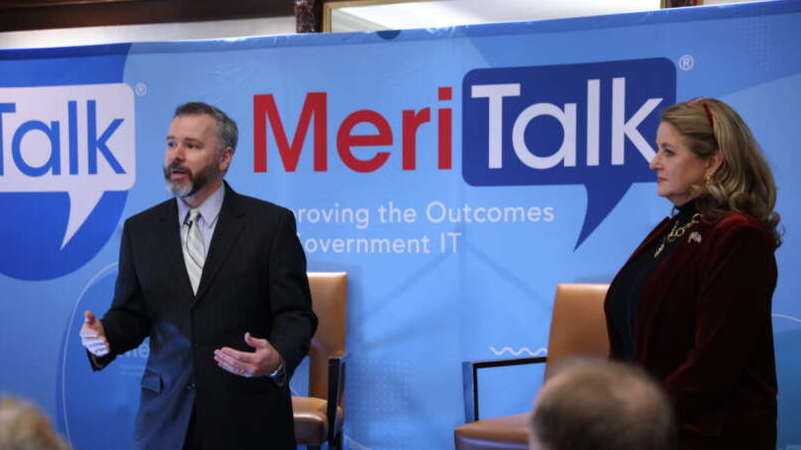
Federal agencies are already integrating artificial intelligence (AI) to support a range of government missions, but one Government Accountability Office (GAO) official said today that the Federal government is facing difficult decisions as it looks to implement new governance structures.
At MeriTalk’s Accelerate AI Forum today in Washington, D.C., Kevin Walsh, the director of information technology and cybersecurity at GAO, pointed to his agency’s recent report on the state of AI in the Federal government.
Looking at just the civilian agencies alone, the December report identified 1,200 current and planned AI use cases. The takeaway from the report, Walsh said, is that “AI is here.”
“We are on the cusp, I believe, of massive, massive changes to the way the government works,” Walsh said. “We’re thinking about AI, we’re implementing AI, and it’s which comes first, right?”
“We’re going to be putting in new governance structures,” he added. “There are a lot of requirements for AI that the government is going to have to address, and we are going to be faced with a decision: Do we create separate silos for AI, which is the easy thing to do? Or do we try to blend it into already existing processes and take advantage of the oversight … and the capabilities that we already have?”
Walsh explained that incorporating AI into existing governance structures will be more difficult, but it will be crucial to ensure the success of AI. When you make AI “separate and different,” he said, people “don’t go down that road.”
Although it may be the harder path to take – especially as AI becomes embedded and packaged into more software packages – Walsh said it will be “a key thing for us to ensure the success of AI, the government, and the work we do.”
Former U.S. Federal Chief Information Officer Suzette Kent noted that the Federal government is in a unique position as it develops standards while advancing AI innovation.
“What is really interesting is, unlike if we went back again in history and looked at other [technology] trends, the government and private sector are kind of on the same pace,” Kent said. “And so, we’re writing the rules as we’re learning and deploying the capability.”
“We are setting a new path not only for the government but a new path for how products and services and citizens are served in our nation – and we want to do that in a way that is safe and secure,” she said.
Walsh added that with coming AI capabilities, the government may not have as much influence as it has in the past with other emerging technologies. Traditionally, he said the public sector would “follow” in the Federal government’s footsteps.
“This is going to be difficult for all of us,” Walsh said. “But the more that public and private can work together to make sure that the AI that is built is the AI that we want to see, I think that’s going to be key.”
